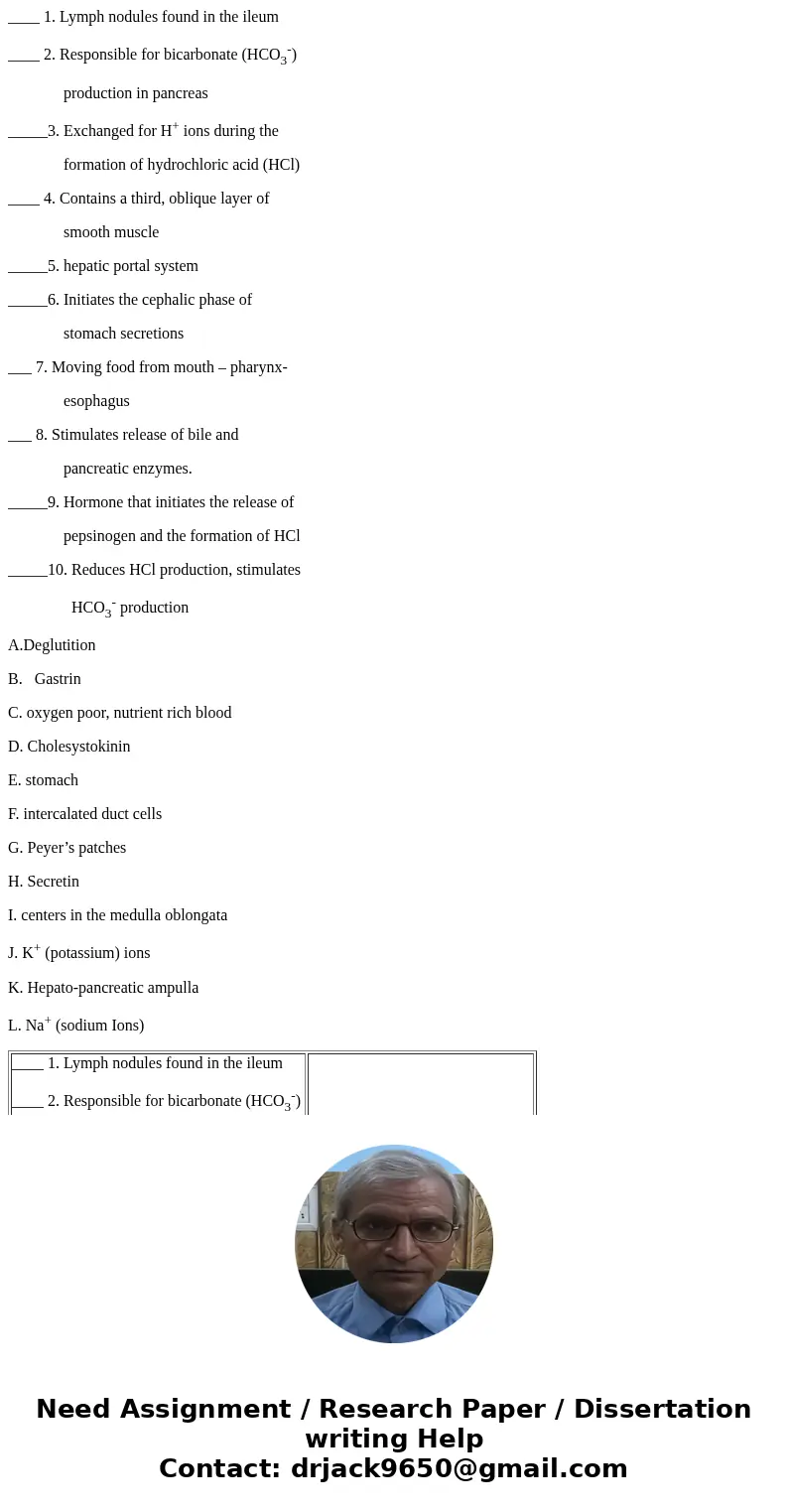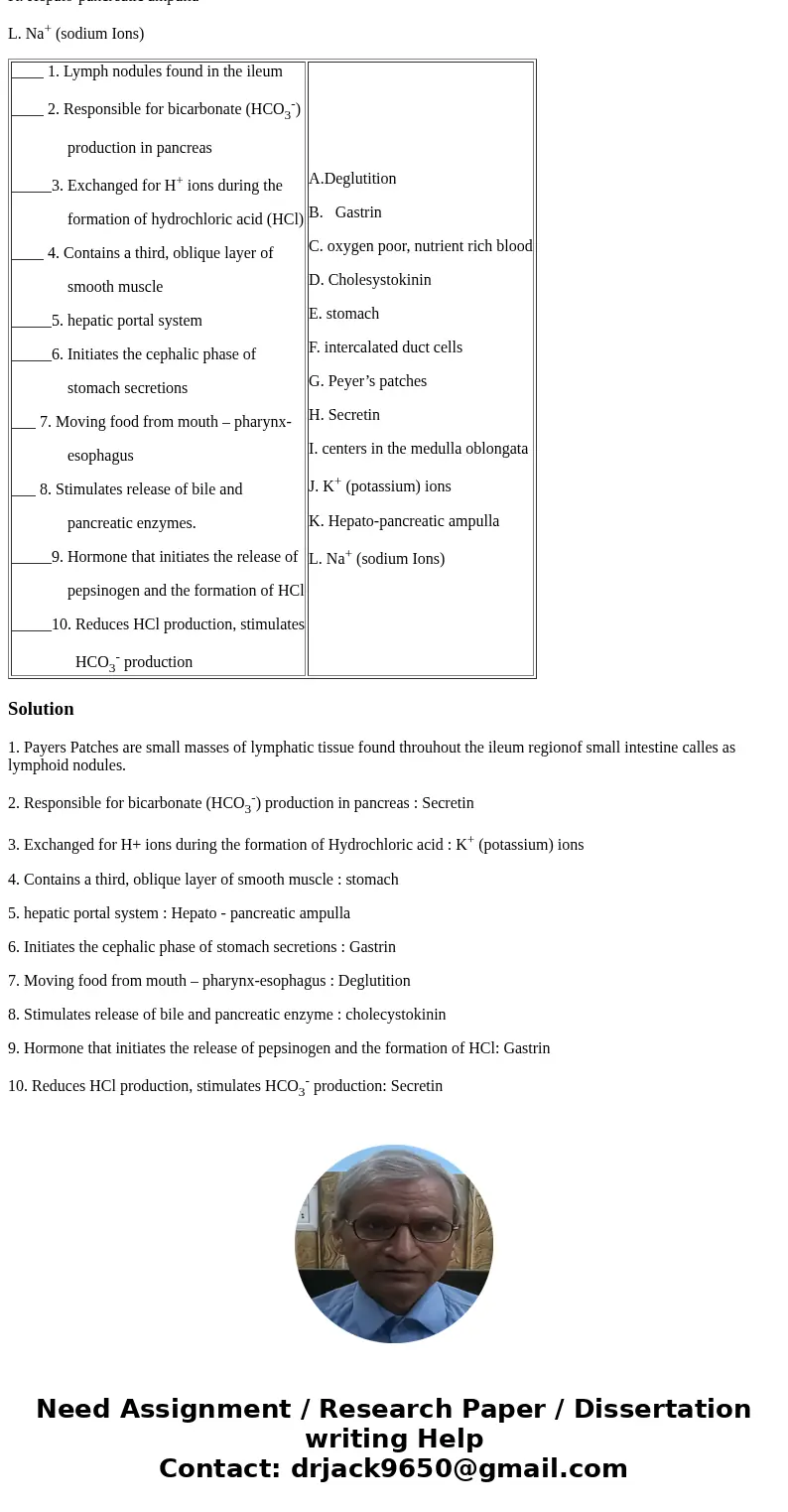1 Lymph nodules found in the ileum 2 Responsible for bicar
____ 1. Lymph nodules found in the ileum
____ 2. Responsible for bicarbonate (HCO3-)
production in pancreas
_____3. Exchanged for H+ ions during the
formation of hydrochloric acid (HCl)
____ 4. Contains a third, oblique layer of
smooth muscle
_____5. hepatic portal system
_____6. Initiates the cephalic phase of
stomach secretions
___ 7. Moving food from mouth – pharynx-
esophagus
___ 8. Stimulates release of bile and
pancreatic enzymes.
_____9. Hormone that initiates the release of
pepsinogen and the formation of HCl
_____10. Reduces HCl production, stimulates
HCO3- production
A.Deglutition
B. Gastrin
C. oxygen poor, nutrient rich blood
D. Cholesystokinin
E. stomach
F. intercalated duct cells
G. Peyer’s patches
H. Secretin
I. centers in the medulla oblongata
J. K+ (potassium) ions
K. Hepato-pancreatic ampulla
L. Na+ (sodium Ions)
| ____ 1. Lymph nodules found in the ileum ____ 2. Responsible for bicarbonate (HCO3-) production in pancreas _____3. Exchanged for H+ ions during the formation of hydrochloric acid (HCl) ____ 4. Contains a third, oblique layer of smooth muscle _____5. hepatic portal system _____6. Initiates the cephalic phase of stomach secretions ___ 7. Moving food from mouth – pharynx- esophagus ___ 8. Stimulates release of bile and pancreatic enzymes. _____9. Hormone that initiates the release of pepsinogen and the formation of HCl _____10. Reduces HCl production, stimulates HCO3- production | A.Deglutition B. Gastrin C. oxygen poor, nutrient rich blood D. Cholesystokinin E. stomach F. intercalated duct cells G. Peyer’s patches H. Secretin I. centers in the medulla oblongata J. K+ (potassium) ions K. Hepato-pancreatic ampulla L. Na+ (sodium Ions) |
Solution
1. Payers Patches are small masses of lymphatic tissue found throuhout the ileum regionof small intestine calles as lymphoid nodules.
2. Responsible for bicarbonate (HCO3-) production in pancreas : Secretin
3. Exchanged for H+ ions during the formation of Hydrochloric acid : K+ (potassium) ions
4. Contains a third, oblique layer of smooth muscle : stomach
5. hepatic portal system : Hepato - pancreatic ampulla
6. Initiates the cephalic phase of stomach secretions : Gastrin
7. Moving food from mouth – pharynx-esophagus : Deglutition
8. Stimulates release of bile and pancreatic enzyme : cholecystokinin
9. Hormone that initiates the release of pepsinogen and the formation of HCl: Gastrin
10. Reduces HCl production, stimulates HCO3- production: Secretin


 Homework Sourse
Homework Sourse